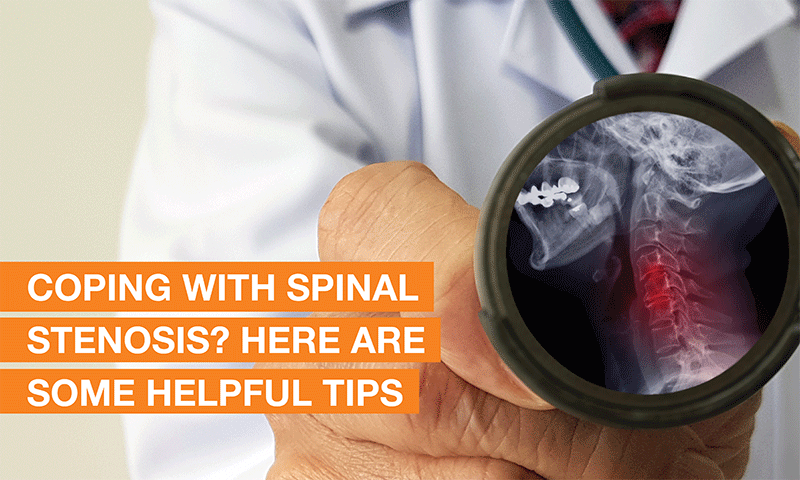Request Appointment
Enter your details and we will be in touch with you shortly;
Or call
8655885566
between 8 am and 8 pm.


Spinal stenosis is a condition that occurs when the spinal canal narrows, causing pressure on the nerves and spinal cord. It is commonly associated with age-related changes in the spine, such as degenerative disc disease or arthritis. This can result in various symptoms including back pain, sciatica, muscle weakness, and difficulties with balance and walking.
Living with this spinal condition can be challenging due to the discomfort and limited mobility it brings. The narrowing of the spinal canal affects nerve function and can cause ongoing pain and other related symptoms.
When it comes to spinal conditions, consulting a spine specialist is of utmost importance. They possess the expertise to provide an accurate diagnosis based on a thorough evaluation of your symptoms and may utilize diagnostic tests such as imaging studies to gather further information. With this comprehensive understanding of your condition, they can create a personalized treatment plan tailored to your specific needs. Prioritizing proper diagnosis and treatment is essential not only for managing the condition effectively but also for enhancing your overall quality of life.
There are several strategies and non-invasive treatments available to help manage and alleviate the symptoms associated with spinal stenosis. In this blog, we will explore effective exercises for spinal stenosis, as well as non-surgical stenosis treatment options, providing you with practical advice and insights to empower you on your journey toward a more comfortable and active life.
A key component of non-invasive treatment for spinal stenosis is physical therapy. A skilled healthcare professional will design a customized treatment program to strengthen the surrounding muscles, improve flexibility, and enhance overall spinal stability. These movements target core strength, posture correction, and pain reduction, fostering long-term relief and functional improvement to enhance stability.
Your healthcare provider may prescribe you certain medications to reduce inflammation and manage pain associated with this condition. It’s important to follow the recommended dosage and consult with your doctor regarding any potential side effects or interactions with other medications.
Depending on your specific needs, your healthcare provider may suggest the use of assistive devices such as a cane or walker to improve balance and stability while walking.
Regular exercise is a crucial component of managing spinal stenosis. However, it is important to consult with a healthcare professional or physical therapist before starting any treatment program.
Here are a few strategies commonly recommended for individuals with spinal stenosis:
Gentle stretching: Perform stretching exercises that target the lower back, hamstrings, and hip muscles to improve flexibility and relieve tension in the spine.
Strengthening movements: Focus on exercises that strengthen the core muscles, including the abdominal and back muscles, as well as the hips and thighs. Examples include bridges, pelvic tilts, and leg lifts.
Low-Impact Aerobic Activities: Engage in low-impact exercises such as walking, swimming, or cycling to improve cardiovascular health and overall fitness without placing excessive strain on the spine.
Water Therapy: Aquatic exercises can be particularly beneficial for individuals with this spinal condition. The buoyancy of the water reduces the pressure on the spine, allowing for gentle movements and an improved range of motion.
Posture Awareness: Practicing good posture is essential for spinal stenosis management. Maintaining a neutral spine position, avoiding excessive bending or twisting, and utilizing ergonomic techniques in daily activities can significantly reduce discomfort.
Weight Management: Maintaining a healthy weight can alleviate stress on the spine, contributing to symptom relief. A well-balanced diet and regular exercise can aid in weight management and overall health.
Surgical options may be considered if non-invasive approaches do not provide adequate relief. Your medical professional will evaluate your condition and determine if surgical procedures or minimally invasive surgeries are appropriate for you.
While spinal stenosis can present challenges, managing the condition is possible through a combination of non-invasive treatment options and targeted movements. By incorporating effective pain management techniques into your daily life, you can take control of spinal stenosis, reduce symptoms, and enhance your overall well-being.
Living with spinal stenosis does not have to mean sacrificing your quality of life. Seeking professional guidance and implementing a comprehensive treatment plan tailored to your needs is key to finding long-lasting relief from pain and discomfort.
It is essential to get a proper diagnosis from a medical professional to determine the severity and appropriate treatment plan for your specific case of spinal stenosis.
Call QI Spine 086558 85566 to consult with our spine specialists and book your first free appointment today.
Visit our nearest clinic for your first consultation